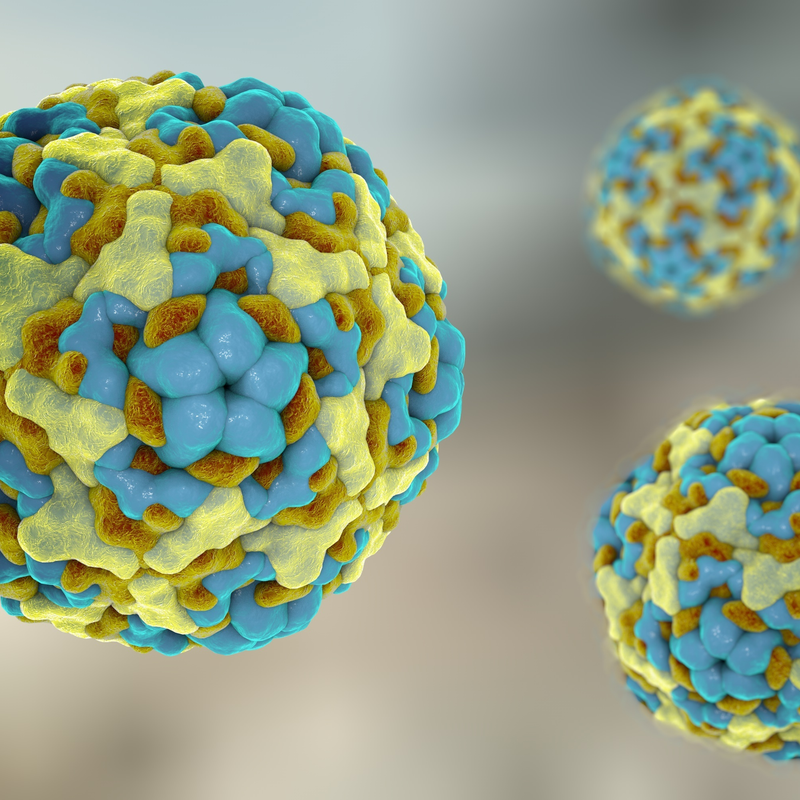
What is hand-foot-mouth syndrome?
As a rule, hand-foot-mouth syndrome is a harmless, yet highly infectious viral infection. It mainly affects children under ten years of age. Various enteroviruses are the triggers of this disease. These viruses occur all over the world and are highly contagious. The hand-foot-and-mouth syndrome is in season all year round. However, the focus of infections is in late summer and early autumn.
How is hand-foot-and-mouth syndrome transmitted?
Hand-foot-and-mouth syndrome is transmitted from person to person. This can happen directly, for example via the body fluids such as nasal secretions and pharyngeal secretions. Via saliva or also via the secretion of the characteristic skin blisters. Affected persons distribute tiny saliva droplets through coughing and sneezing, which are inhaled by healthy persons . Touching the blister secretion can also lead to infection .
However, hand-foot-and-mouth syndrome can also be transmitted via smear infection. The droplets of secretion, which contain the virus, contaminate surfaces such as door handles or cutlery and thus become a source of danger for others. In addition, the virus is excreted in the stool. Anyone who does not wash their hands carefully after defecating becomes a carrier of the virus.
What is the incubation period for hand-foot-and-mouth syndrome?
The period between infection and the onset of the first signs of illness is three to ten days. In some cases, however, infection becomes noticeable earlier or only much later . However, at the earliest one day after infection and at the latest one month later.
How long are people with hand-foot-and-mouth syndrome considered contagious?
Those affected are most contagious in the first few weeks after infection, because this is when the virus multiplies so rapidly, that the viruses are circulated in large numbers via the stool and via body fluids. However, there is still always a risk of infection, even if the symptoms of hand-foot-and-mouth syndrome have already subsided. Some of the pathogens are still excreted in the stool for several weeks. It is therefore advisable to always wash your hands after going to the toilet or changing nappies .
How does hand-foot-and-mouth syndrome manifest itself?
Based on the name, you can already guess which parts of the body are typically affected. At the beginning of the disease, however, the hand-foot-mouth syndrome makes itself felt with vague symptoms. The first non-specific symptoms are usually the following:
- flu-like symptoms,
- Fever,
- Sore throat,
- Aching limbs,
- Poor performance,
- Loss of appetite.
In the
further course, about 2 days later, red, painful
spots appear in the mouth. After a short time, these become small
superficial ulcers or blisters. Around the same time or only
a few hours later, a rash develops on the feet and hands of the
affected person. This can be recognised by many red spots
of different sizes and shapes. At first, they do not itch
. However, this changes in most cases. However, this changes in most cases when
the skin blisters form.
The palms of the hands and soles of the feet are particularly affected.
Sometimes, however, the rash can also appear on the buttocks, back of the hands, genital area, knees or
elbows. In many sufferers, the fingernails
and toenails come off about four to eight weeks after the symptoms have passed.
However, there are also patients who do not experience hand-foot-and-mouth disease at all. Doctors know that the symptoms mentioned only occur in about four out of five infected persons. A mild course of the disease can be observed especially in adults. Even children over the age of ten often do not develop any symptoms. Nevertheless, infection is possible for others even if the affected person does not show any symptoms himself.
How is hand-foot-and-mouth syndrome diagnosed?
At , the doctor takes the patient's medical history and performs a physical examination. To do this, he looks down the throat of the affected person and examines the affected parts of the body. Diagnosing this disease is not difficult. However, to be on the safe side and make sure that no other disease is behind the symptoms, a laboratory examination is ordered. For this, samples of stool or even a throat swab are sent to the laboratory for appropriate tests.
How is hand-foot-and-mouth syndrome treated?
Hand-foot-mouth syndrome can only be treated symptomatically, but not causally. This means that there is no medication against this pathogen. As a rule, this would not be necessary, because the disease is usually harmless. Therapy is therefore limited to relieving the pain and symptoms. Antipyretics and painkillers can be taken.
How can hand-foot-and-mouth syndrome be prevented?
There is no vaccination against this disease. However, you can prevent infection or passing on the pathogens as follows:
- thorough hand hygiene,
- Sneezing and coughing only into the crook of the arm,
- Avoid kissing and hugging affected persons,
- wash hands after going to the toilet and changing nappies, or even better, disinfect them,
- wash your hands before preparing food,
- Disinfect door handles and other contaminated objects.
Is there an obligation to report hand-foot-and-mouth syndrome?
According to Infektionsschutzgesetz (Infection Protection Act), there is no obligation to report infected persons with hand-foot-and-mouth syndrome. However, if cases of the disease accumulate in community facilities such as kindergartens or schools, they must be reported to the public health department. The health department will then decide on further protective measures.
